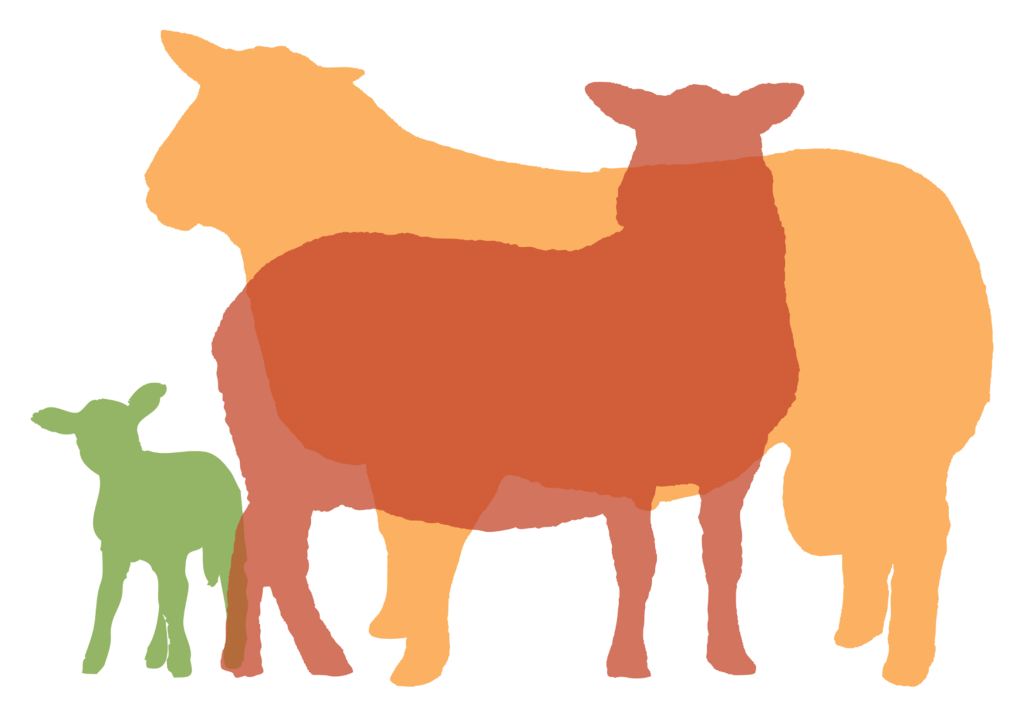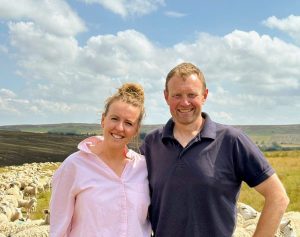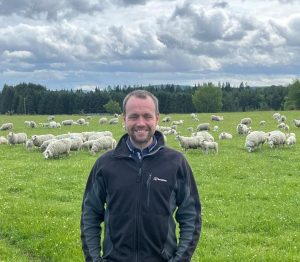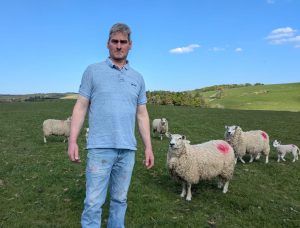Herefordshire sheep producer, Frank Lloyd is establishing an Aberfield cross ewes flock which is enabling him to increase output per acre by 33% accompanied by improved margins. He is also introducing additional value to the enterprise with an Aberfield ram breeding flock.
Being flexible and prepared to listen and learn were at the heart of responding to the challenge of stepping up output and efficiency to cover the rent and more, says Frank who farms 400 acres, the majority of which is tenanted.
“Stocking rate was the main issue which we are now successfully addressing. Whilst our Suffolk cross Mule ewes had done a cracking good job, it was time to move on. Introducing the Aberfield cross Welsh ewe has enabled us to increase stocking rate to five ewes and lambs from the previous of 3.5 Suffolk cross Mule ewes per acre.
“These Aberfield cross ewes are 10kg to 15kg lighter than out Suffolk crosses. The shearlings are rearing 1.6 lambs compared with 1.7 from the Suffolks, however when you multiply the lambing percentage by the achievable stocking rate, the Aberfield crosses produce an additional two lambs per acre,” he says. “The Aberfield crosses lambed with minimal assistance, the lambs are virile and these ewes demonstrate good mothering ability taking both their lambs with them and from our experience last year, unlike other smaller breeds, 19kg to 21kg deadweight lambs is easily achieved.
“Furthermore, the Aberfield cross ewes require noticeably fewer inputs. Compared with our hungry Suffolk crosses, they ate 50% less concentrate in final four weeks prior to lambing, the Aberfield crosses have good foot structure which has led to a significant reduction in lameness incidences and overall vet and med costs have reduced by £2 per ewe,” he explains.
“Whilst I’d tried other breeds to increase stocking rate and encountered udder problems and longevity issues, I’d seen introducing the Aberfield working well in other flocks, and also demonstrating versatility lending itself to a wide variety of production systems,” says Frank who annually contract shears 20,000 ewes. “In addition, being bred by Innovis from performance recorded genetics gave us the confidence to invest. In fact, Innovis’ breeding policy is something that should have been rolled out 20 years ago whilst the industry in general continues to regard looks, including pretty faces as being important selection criteria.”
From now on plans are to retain a 200-ewe flock of Welsh ewes for replacement purposes and breed a closed flock of 600 Aberfield Welsh ewes. “These are the sheep for me; I am very, very optimistic about this cross. They are weaning their body weight of lamb and are reducing input costs.”
Frank’s second string to the bow is the establishment an Aberfield ram breeding flock for Innovis; 1,600 embryos are being introduced to a proportion of his commercial ewes over a three-year period and two years already completed. A flock of 400 elite Aberfield ewes will eventually be established at Abbey Dore to annually produce rams on contract to Innovis.
Embracing EID is Frank’s third step towards improving flock efficiency. “It will enable me to record every lamb born on the unit, measure its performance and subsequently help me to make better management and selection decisions in particular with the ewe lambs. Any that don’t meet with my strict protocols for growth rate from milk and grass, and feet will be culled.”
He adds: “We will also be replacing our Continental rams for the Abermax, a robust meat ram from Innovis which has also been selected and reared off a grass based system under commercial conditions. I am confident that we’ll get even faster lamb growth rates together with improved meat yield. Like the Aberfield, the Abermax is supported by performance recording and I have the confidence it will consistently deliver what’s it says on the tin.”



